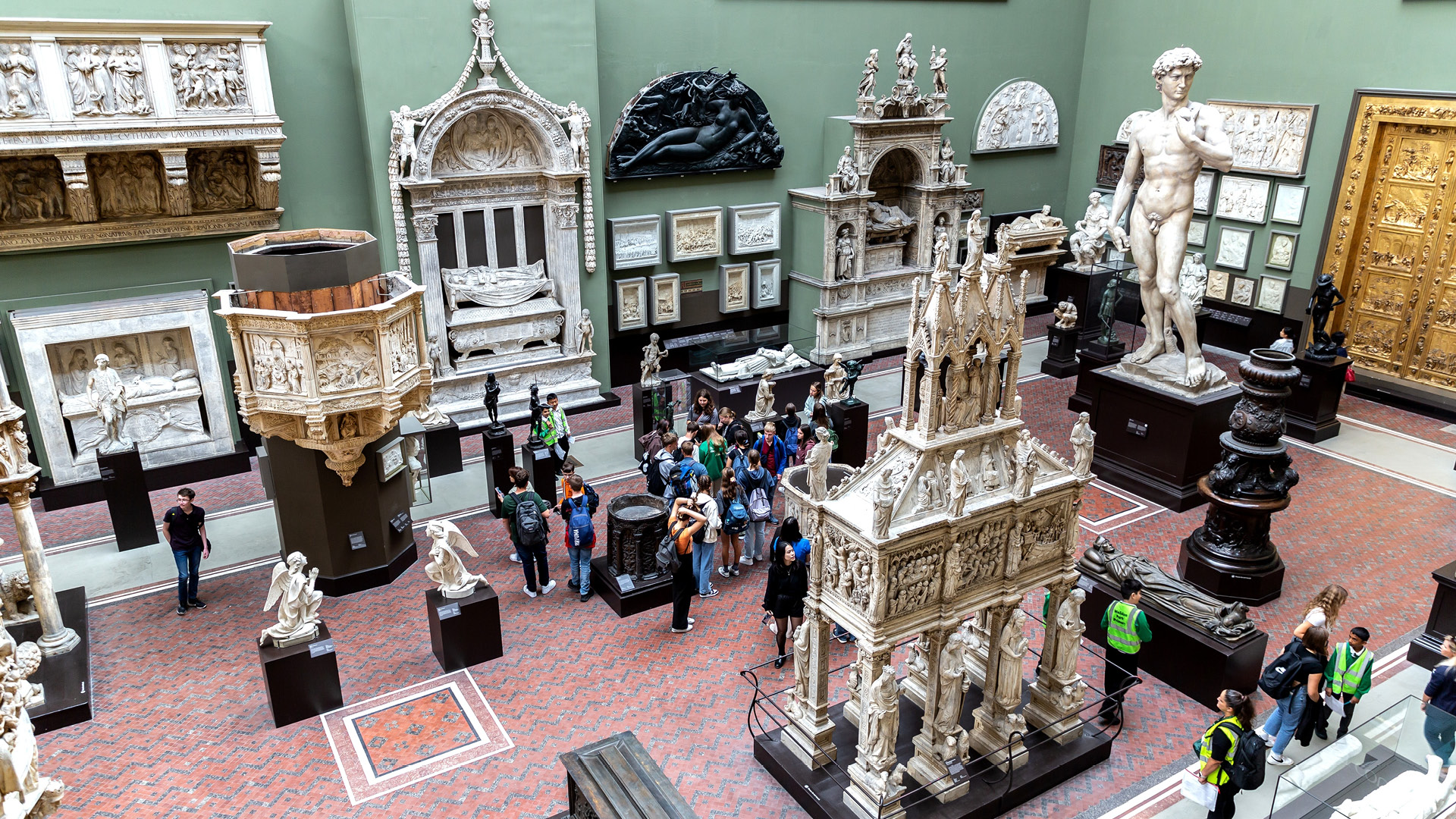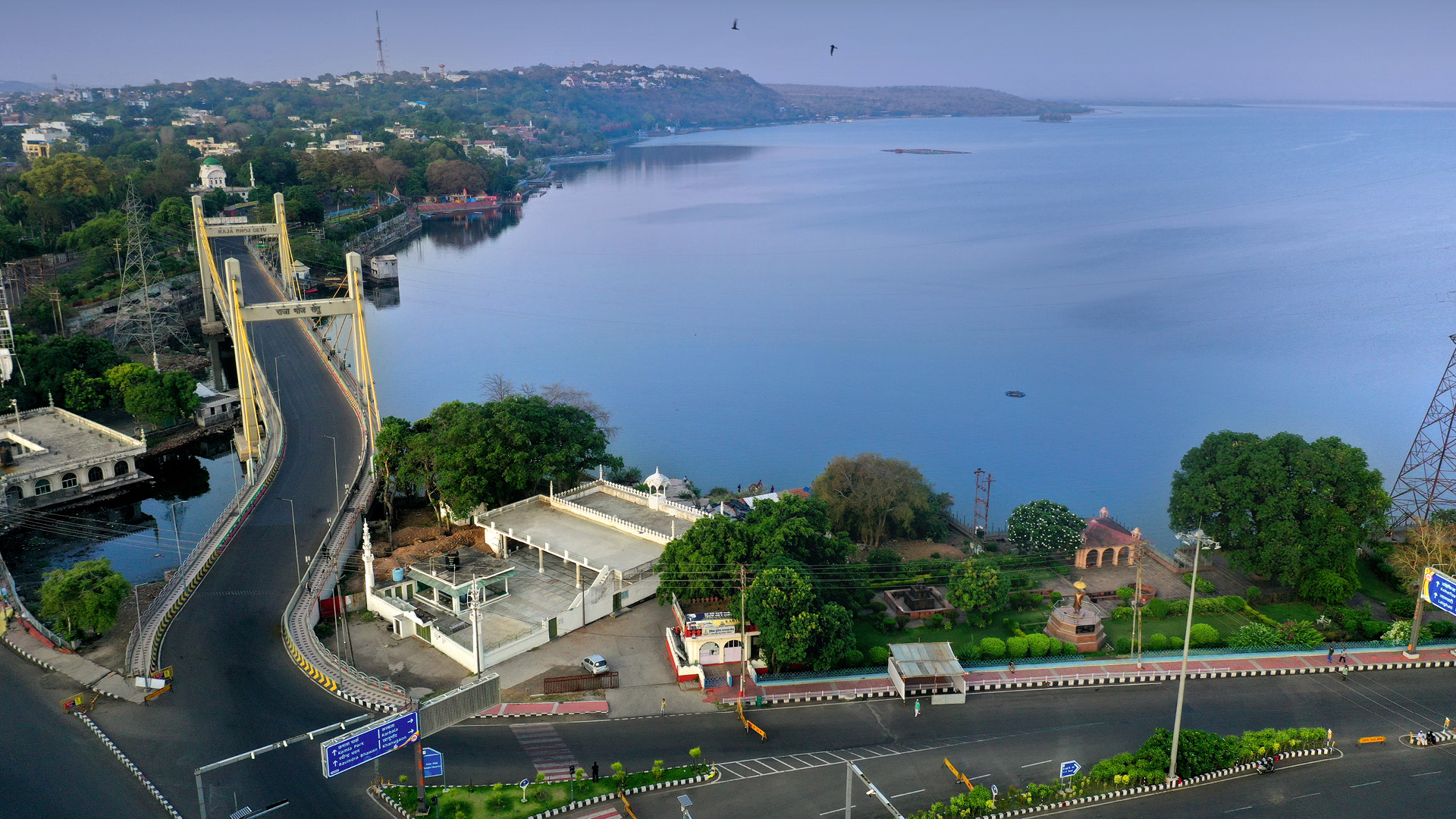A journey of serenity and vibrancy woven in timeless traditions, spiritual fervour, and delectable street food awaits in this holy city by the Ganges.
By PUNITA MALHOTRA
THE FIRST LIGHT OF DAY GENTLY caresses the ghats, the flight of steps that cascade down to the waters of the Ganges. A breathtaking canvas unfolds before my eyes as I approach the banks on my boat: skies painted in hues of pink and gold, the shimmering ripples of the river, distant echoes of classical ragas, the faint strains of sitars, the wafting fragrance of incense, and delicate tinkling of bells. I touch the oars of my gliding vessel as if to tune into the rhythmic splashing. One of the oldest continually inhabitated cities in the world, Varanasi, or Benaras, as it’s locally known, has already begun to cast its magical glow over me. And I give in to the meditative chants of the Subah-e-Benaras (morning in Benaras), a divine overture orchestrated by the Ganges, as the city welcomes me to its shores!
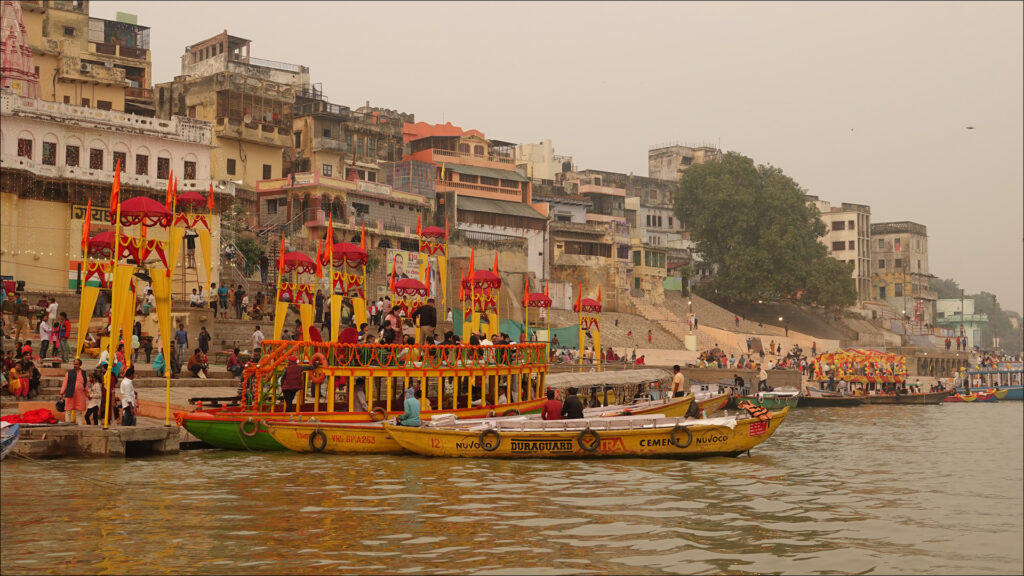
in mesmerising splendour.
Spiritual harmony
While the serenity is palpable here, there is still an infectious energy in the air. As the ancient city rises from its slumber, pilgrims gather for ritualistic dips in the sacred waters. Locals wash clothes, meditate, and practice yogic poses. And I can see scores of devotees perform morning salutations. At Assi Ghat, one of the city’s largest and most popular piers, priests begin a soul-stirring morning aarti (prayer) ritual, lifting flaming lamps in rehearsed unison. The entire scene is tinged with the surreal—it’s a mesmerising sight.
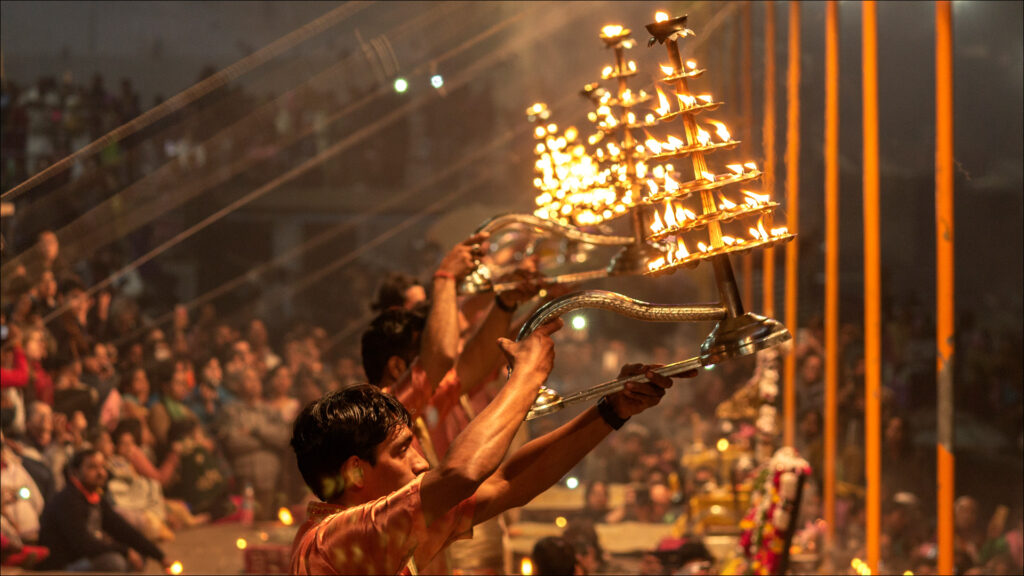
Chaos… and peace
I disembark on the shore, and am ready to see Benares in all its mysterious glory. Ahead, a collection of labyrinthine lanes cheekily invites me to explore its chaos. Feeling adventurous, I have resolved to switch off the GPS today. So, I take a deep breath, pull my camera strap, and stride in the direction my gut dictates. The air is rich with the sizzle of oil and the scent of spices. All I need to do is to follow the trail of my nose.
I make my way through the narrow alleys, walking past a varied yet amicable mix of people and animals. The locals greet each other as ‘Mahadev’ as they slurp their first steaming cups of sweet chai. I have been told that having tea is a ritual at every hour of the day and declining it may be considered rude. Crowds have gathered at every food stall. These are not just for tourists. Residents buy kachoris (fritters filled with spiced lentils and potatoes) and jalebis every day for the family breakfast at home. My stomach is rumbling, too. But first, I want to visit one of the city’s most revered destinations.
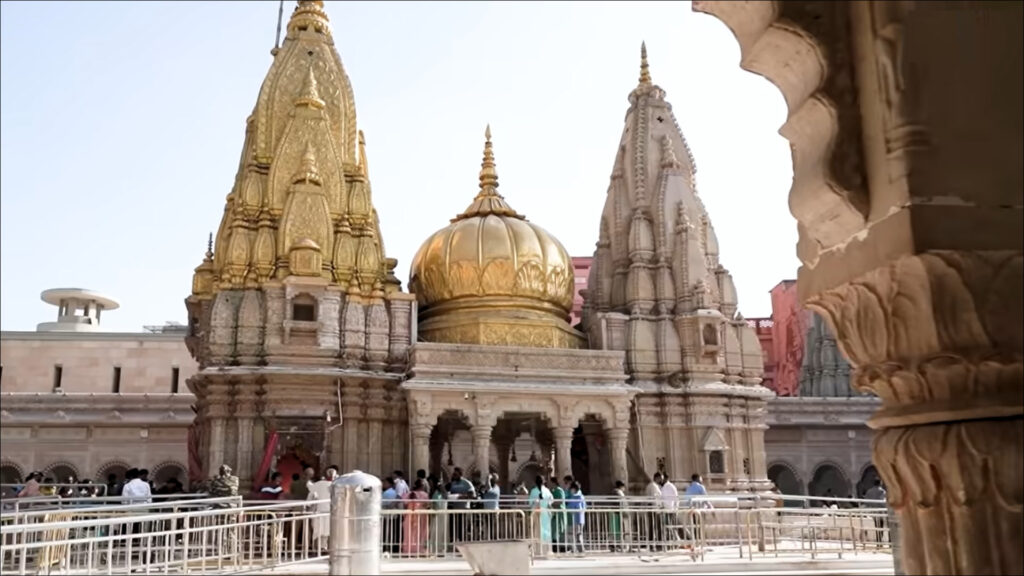
I follow the stream of humanity through the maze of lanes dotted with hundreds of small and large shrines devoted to various deities. The heart of this spiritual cosmos, the Kashi Vishwanath Temple, is near. The imposing sanctum with a golden spire echoes with the chant of mantras, wafting incense, and the rhythmic ringing of bells. With hundreds of devotees claiming their blessings, the vibe, though chaotic, is electrifying.
A change of atmosphere awaits me at the next stop. The Sankat Mochan Temple, set amidst lush, green environs overlooking the mountains, is an oasis of peace and devotion for the weary soul. The hallowed grounds are rich with melodious hymns. Gentle sunlight filters through ancient trees, casting a dappled radiance on the temple courtyard, even as worshippers of the Hindu deity Lord Hanuman file past offering their prayers quietly.
Culinary devotion
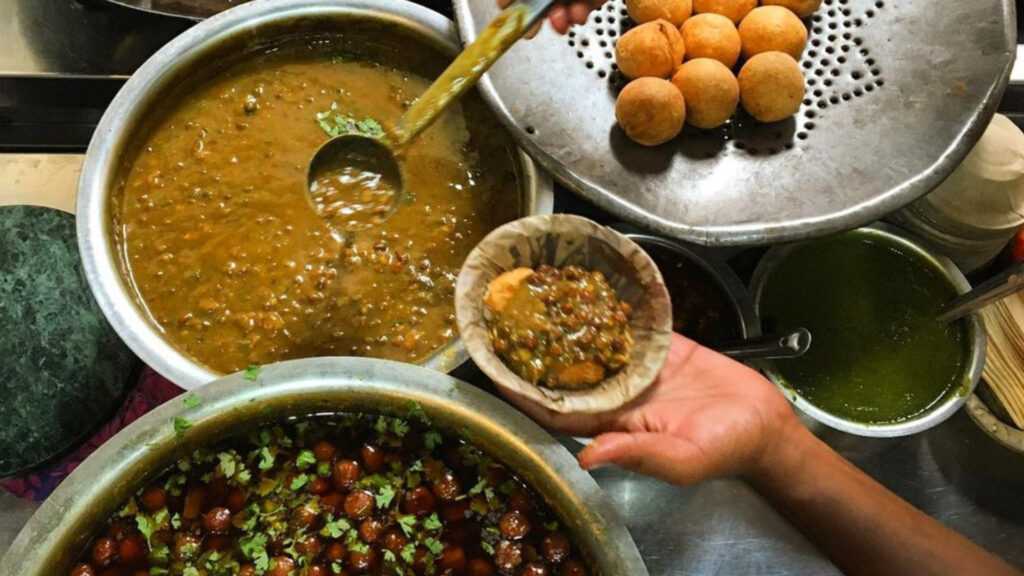
curry), and puris.
Spirituality takes many forms, and I set out to experience the divinity that comes in the shape of soul-satisfying food. Waiting in the queue at Ram Bhandar, a shop in Thatheri Bazar, I feel as though I’m a part of the community as I engage in friendly banter with vendors and exchange notes about sightseeing spots with fellow food enthusiasts. But my entire conversation ceases as the first dish
appears before me. I begin by gorging on double-fried golden, crisp kachoris. The pungent taste of hing (asafoetida) will linger on my tastebuds for a long time. I try the malai gilouri, a sweet delicacy folded like a paan and filled with dry fruits to indulge my sweet tooth. Tradition meets taste in an explosion of rich flavours with the tri-coloured tiranga mithai. Interestingly, this dessert, comprising three layers of pista, almond, and saffron, was invented as a symbol of patriotism by the two brothers who owned this shop during
pre-Independence.
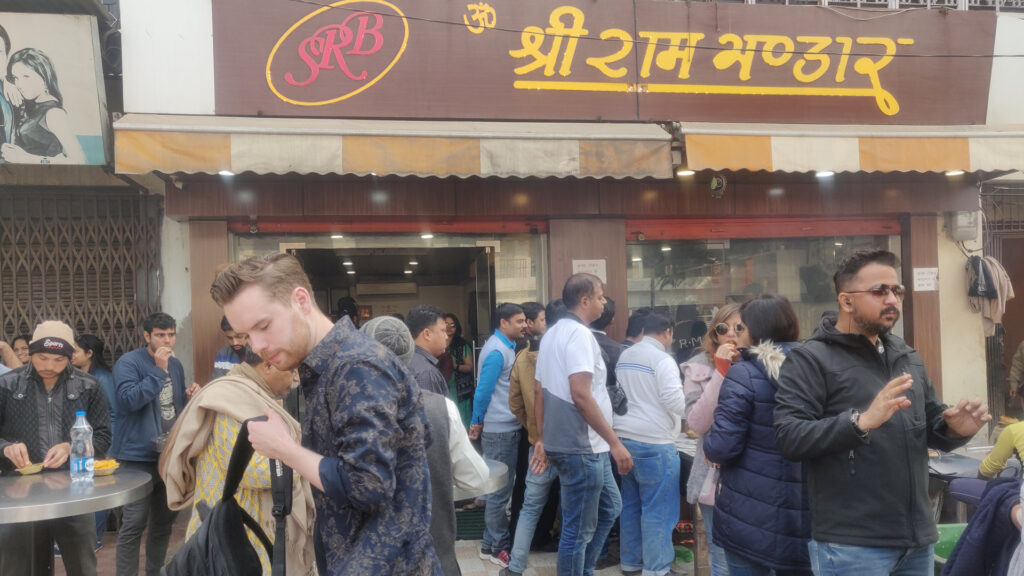
famous for its snacks.
More items are on my Varanasi street food list, so I treat myself to the malai peda at Shree Rajbandhu Sweets. A sweet delight with a creamy texture and the richness of condensed milk encapsulates the essence of this traditional Indian mithai. I wrap up my feast with the legendary Benarasi paan, an intricate creation of betel leaves, areca nuts, and aromatic spices and flavourings, at the famed Deepak Tambul Bhandar. In winter, I am told, it is almost obligatory to eat malaiyyo, an ethereal, delicate, sweet indulgence with a creamy, airy texture capturing the essence of Varanasi’s culinary creativity. I promise myself to try it on my next visit.
An undying craft
And now, it’s time to experience what is possibly one of Varanasi’s most famous creations and exports—Benarasi silk. During the Mughal era, this superior cloth gained royal favour, soaring to unprecedented popularity. Nobility and royalty were obsessed with the elegance and opulence of the Benarasi saree. Families dedicated themselves to handloom weaving, passing down their expertise through generations. The illustrious history of this unique craft traces back to the Vedic era and resonates in the very fabric of the city. I stand silently, watching weavers meticulously interlace silk threads and create exquisite motifs using time-tested techniques. The Benarasi saree continues to be a prized art form and a symbol of Varanasi’s rich cultural heritage, enduring for centuries. Their beauty is so alluring, I end up splurging on three vintage-style masterpieces at a saree shop. The wave of guilt pangs is best ignored.

And the best way to do that? With another appetising meal, of course! When in Benaras, do as Benarasis do, I remind myself. Any time of the day is nashta (snack) time here. I ask for directions to Deena Chaat Bhandar. The tangy goodness of the aloo tikki (potato cutlet) is profoundly satisfying, and so is tamatar (tomato) chaat at the next pit stop, Kashi Chaat Bhandar. I wash it down with refreshing thandai, a cool, aromatic elixir of yoghurt, sugar, and fruits. It hits the spot!
Rhythm of life
That evening, I stoke my love for rhythm at the International Music Centre Ashram in Bengali Tola. Swept away by the melodious strains of sitar, tabla, and classical ragas, I am acutely aware of how this historic city has been a cradle for great talents, from poets Kabir and Ravi Das to sitar virtuoso Pandit Ravi Shankar and the shehnai (wooden Indian instrument) maestro Ustad Bismillah Khan. The Benares music gharana, associated with dance forms like the folksy kajri and haunting thumri, as well as the soulful tunes of dadra, has nurtured exceptional musicians who have enchanted audiences across the world. It’s no surprise then that Varanasi has been recognised by UNESCO as a ‘City of Music’ for its rich melodious heritage, contribution to Indian classical music, and role in preserving and promoting musical traditions.
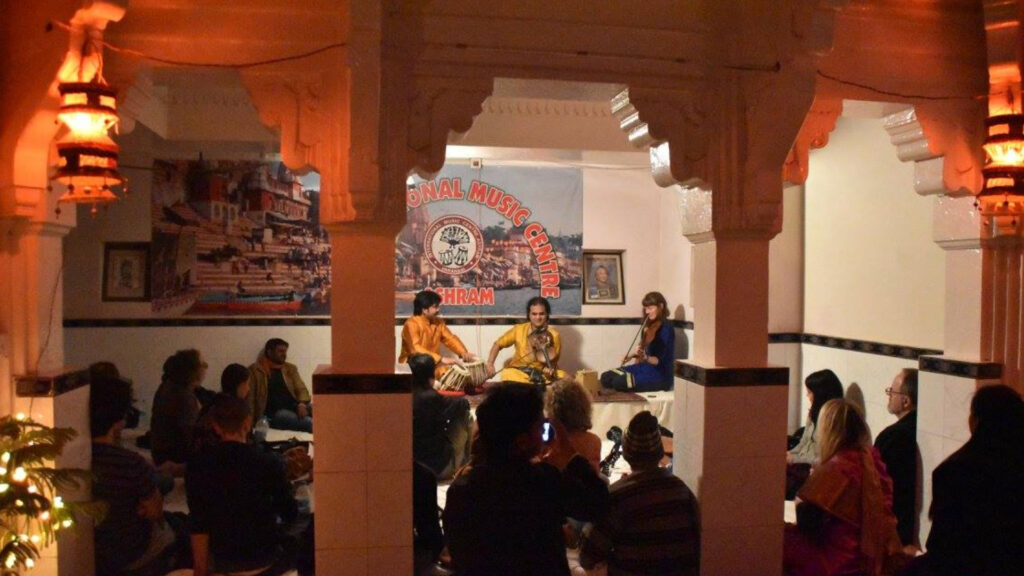
As night falls, I satiate my inner gourmand at the Brij Rama Palace hotel with their Benarasi thali, laden with favourites like chhena (dairy product) dahi (yoghurt) jalebi, baingan kalonji (eggplant cooked in onion seeds), and puris. My palate and heart satiated with Varanasi’s diverse flavours, I am drawn towards the ghats again to feel the tranquillity of the dark night by the ceaseless river. It seems I’m not the only one with that thought as I find many other people there, just sitting by the riverbank, chatting and taking in the view.
“What does it mean to live in Benaras?” I ask the couple sitting on the steps. They smile. “Life has a slow pace here. In the big cities, people talk too fast, and no one has time for you. Our family has lived here for four generations; this is home. What else does one need?”
And in that brief conversation, I learn how spirituality and daily life are intertwined into a simple narrative for the people of Varanasi.
Related: 7 Delectable Dishes From Colombo That Will Delight You Inner Foodie

